Explore the Historical Significance of Wuhan’s National Government Site
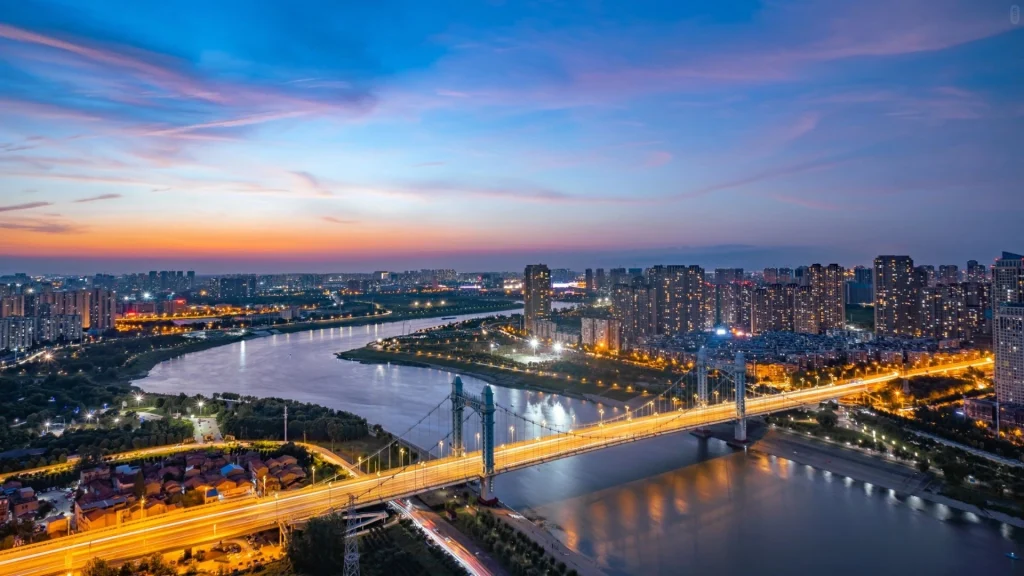
An Essential Guide to Visiting Wuhan National Government Site
In This Guide
- An Essential Guide to Visiting Wuhan National Government Site
- The Rich History and Legends of Wuhan National Government Site
- Main Highlights: What You Absolutely Can’t Miss
- Planning Your Visit: A Practical Guide
- Tickets: Prices, Booking, and Tips
- How to Get There: A Complete Transportation Guide
- Local Cuisine and Accommodation Nearby
- Frequently Asked Questions
- Final Thoughts on Your Trip
Wuhan, a city steeped in rich history and cultural significance, offers travelers a unique glimpse into China’s tumultuous past. Among its many historical sites, the Wuhan National Government Site (武汉国民政府旧址) stands out as a poignant reminder of the Nationalist government era during the early 20th century. Nestled in the bustling Jianghan District, this site is not just an architectural marvel but also a repository of stories that shaped modern China.
As you approach the site, the blend of traditional Chinese and Western architectural influences immediately captures your attention, reflecting the city’s role as a cultural crossroads. Once the heart of the Nationalist government’s operations, this site is now a museum that chronicles the political, social, and military developments of the time. Visitors can wander through thoughtfully curated exhibitions, featuring historical artifacts, photographs, and documents that narrate the struggles and aspirations of the era.
Exploring the Wuhan National Government Site is a journey through time; it invites you to reflect on the complexities of a nation in transition. Whether you’re a history buff or simply curious about China’s past, this site promises to enrich your understanding of the pivotal moments that defined the 20th century.
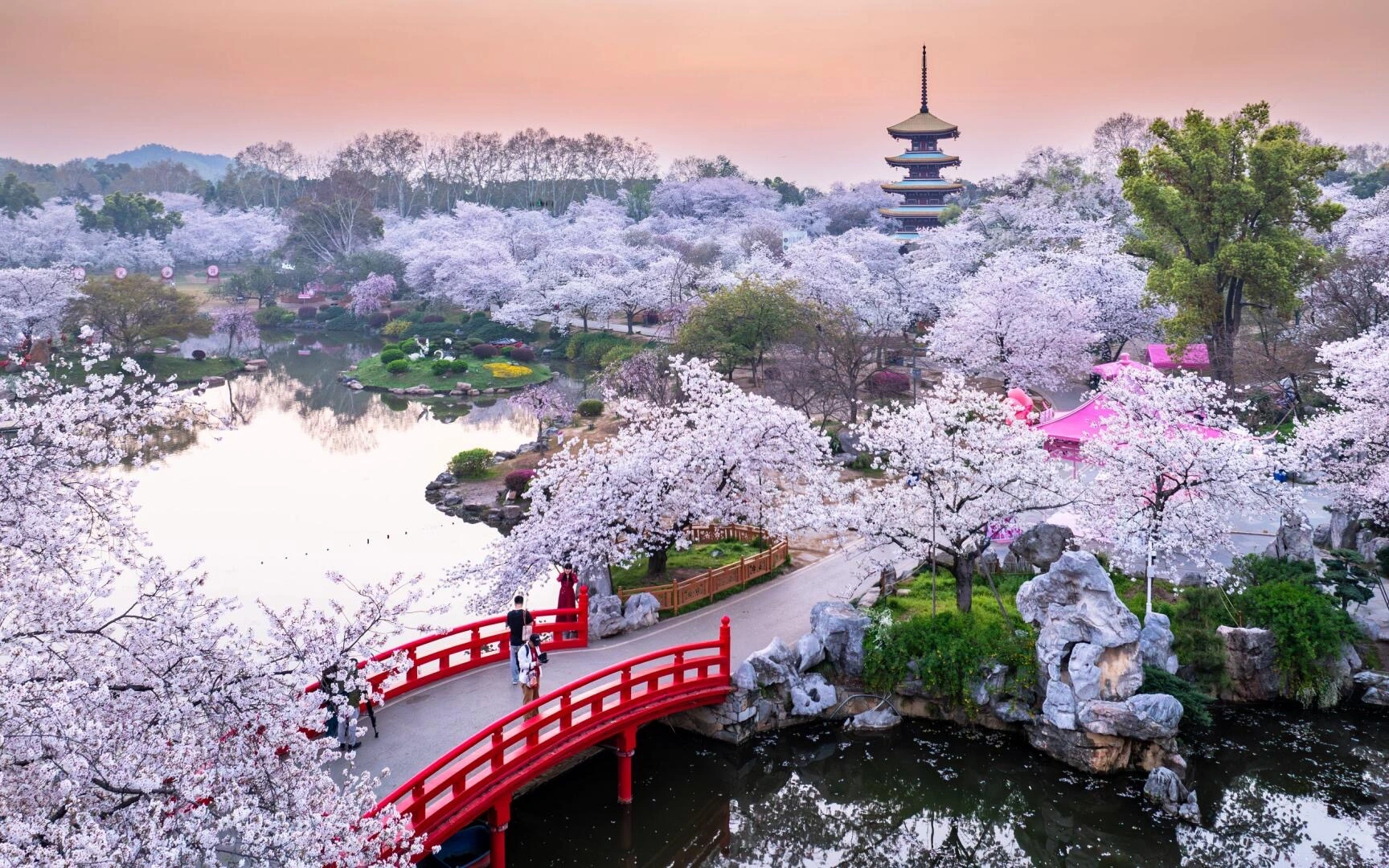
Wuhan National Government Site.
Key Highlights:
– Location: No.706 Zhongshan Avenue, Jianghan District, Wuhan 430014, China
– Opening Hours: Open 24 hours, making it accessible for early risers and night owls alike.
– Visitor Experience: Engage with interactive displays and exhibitions that bring history to life.
– Nearby Attractions: Combine your visit with a stroll down Jianghan Road or a trip to the iconic Yellow Crane Tower.
Join us as we delve deeper into what makes the Wuhan National Government Site a must-visit for anyone eager to uncover the layers of Chinese history and culture.
The Rich History and Legends of Wuhan National Government Site
Unveiling the Legacy of the Wuhan National Government Site
Nestled in the vibrant Jianghan District, the Wuhan National Government Site (武汉国民政府旧址) stands as a silent witness to a pivotal era in Chinese history. This site was once the heart of the National Government during the tumultuous years of the Republic of China, serving as the administrative headquarters from 1927 to 1949. Its significance extends beyond mere architecture, representing a complex tapestry of political intrigue, social upheaval, and cultural evolution.
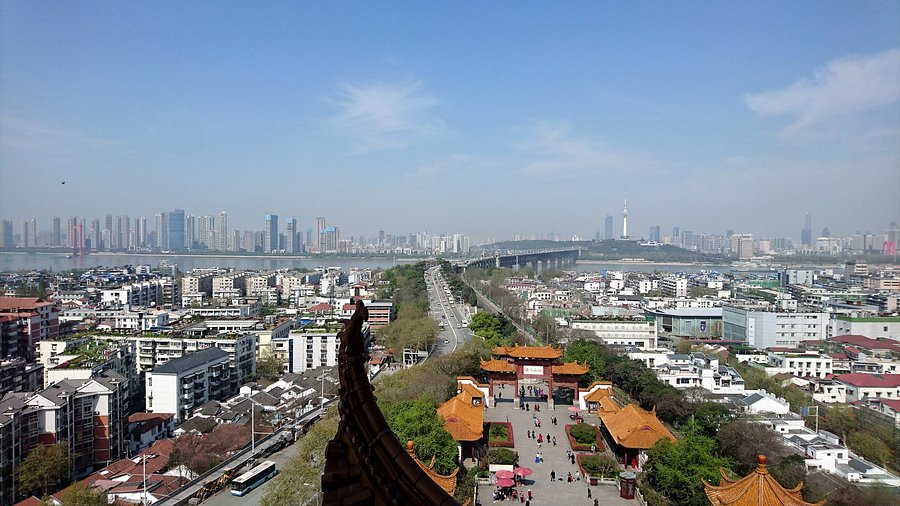
Wuhan National Government Site.
A Historical Overview
The site originally housed the Wuhan Municipal Government, but it gained prominence when the Nationalist Government, led by the Kuomintang (KMT), relocated here during the Northern Expedition against warlords. It was a time of great ambition and reform, with leaders seeking to modernize China amidst internal strife and foreign aggression.
-
The Nationalist Government Era: The KMT, under the leadership of figures such as Sun Yat-sen and later Chiang Kai-shek, aimed to unify the country and establish a modern state. The Wuhan National Government Site became a symbol of their aspirations, where policies were crafted to transform the fragmented nation.
-
A Hub of Revolutionary Activity: This site is steeped in legends of revolutionary fervor. It was here that significant decisions were made regarding military strategies and political alliances. The atmosphere was charged with debates on democracy, socialism, and national identity, making it a hotbed of intellectual and political activity.
-
Cultural Significance: The architecture of the site reflects the blend of Western and Chinese styles, illustrating the cultural exchanges of the time. The building itself is a representation of the aspirations and struggles of a nation in transition.
The Legends that Echo Through Time
The Wuhan National Government Site is not just a relic of the past; it is also the backdrop for numerous legends that continue to captivate historians and visitors alike.
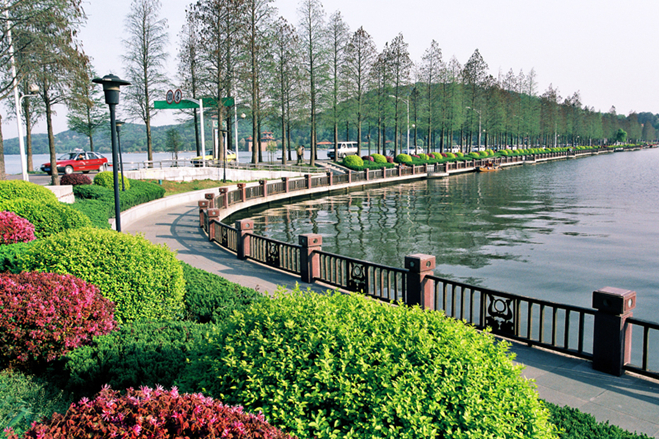
Wuhan National Government Site.
-
The Ghosts of Leaders Past: Many believe that the spirits of significant leaders, like Sun Yat-sen, linger in the hallways. Visitors often recount feeling an inexplicable presence, as if the ideals and aspirations of these leaders still resonate within the walls.
-
The Secret Meetings: Legends abound about clandestine meetings held within the building, where strategies to combat Japanese aggression were devised during the Second Sino-Japanese War. These gatherings were shrouded in secrecy, with only a select few privy to the discussions.
-
Symbol of Resilience: The site is revered as a symbol of resilience, embodying the spirit of the Chinese people in their quest for sovereignty and self-determination. It stands as a reminder of the sacrifices made in the pursuit of national unity.
Visiting the Site
Today, the Wuhan National Government Site is a museum that offers a glimpse into this rich history. The exhibitions include photographs, artifacts, and documents that chronicle the political landscape of the time. Visitors can wander through the halls where history was made, absorbing the atmosphere that shaped a nation.
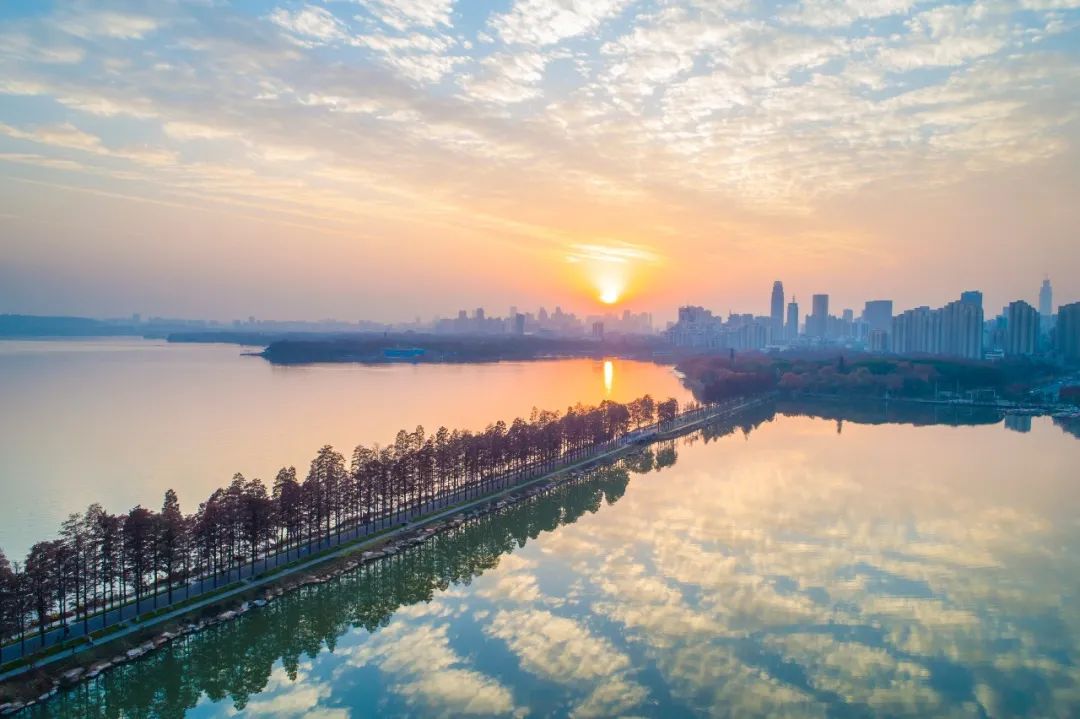
Wuhan National Government Site.
-
Exhibition Highlights: The site features detailed displays that not only recount the chronological events but also delve into the personal stories of those who played pivotal roles in shaping modern China.
-
Accessibility: Conveniently located on Zhongshan Avenue, the site is easily accessible and open for visitors daily, making it an essential stop for anyone interested in Chinese history.
Conclusion
The Wuhan National Government Site is more than a historical landmark; it is a testament to the trials and triumphs of a nation. As you explore its corridors, you are not just walking through a building but stepping into a narrative that continues to unfold. Whether you are a history buff, a cultural enthusiast, or simply a curious traveler, this site promises an engaging and enlightening experience, echoing the rich legacy of China’s past.
Main Highlights: What You Absolutely Can’t Miss
Discovering the National Government Site of Wuhan
Visiting the Wuhan National Government Site (武汉国民政府旧址) is an essential experience for those looking to delve into China’s rich history, particularly the tumultuous period of the Republic of China. This historical site, steeped in significance, offers a glimpse into the political landscape that shaped modern China. Here are the main highlights you absolutely can’t miss during your visit:
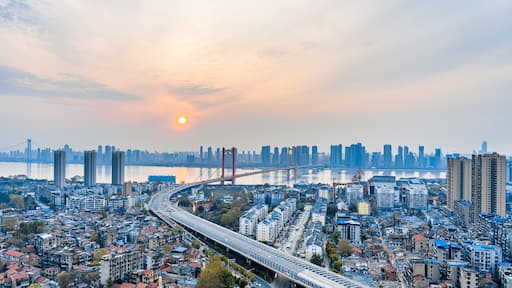
Wuhan National Government Site.
1. The Architectural Marvel
The building itself is a testament to early 20th-century architectural styles, combining elements of Western influence and traditional Chinese design. Its elegant façade and intricate detailing reflect the aspirations of a nation transitioning into modernity. As you explore the site, take a moment to appreciate the blend of styles that narrate the story of an era rich in struggle and hope.
2. Insightful Exhibitions
Inside the National Government Site, you will find a series of exhibitions that showcase artifacts, photographs, and documents from the era of the Nationalist government. These displays are not just informative; they provide a compelling narrative about the political dynamics of the time, the key figures involved, and the impact of their decisions on China’s future.
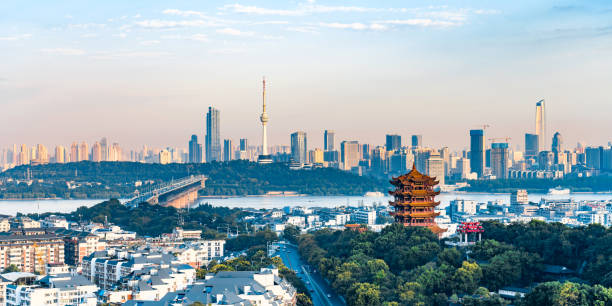
Wuhan National Government Site.
- Historical Artifacts: Look for personal items belonging to influential leaders, which offer a personal connection to the past.
- Documentary Displays: Engage with multimedia presentations that bring to life the events of the era, making history accessible and engaging.
3. Reflective Spaces
In addition to the exhibitions, the site features quiet areas for reflection. These spaces are designed for visitors to contemplate the complex history of the Nationalist government and its legacy. As you wander, consider the challenges faced during this pivotal time in Chinese history, and how they resonate in contemporary society.
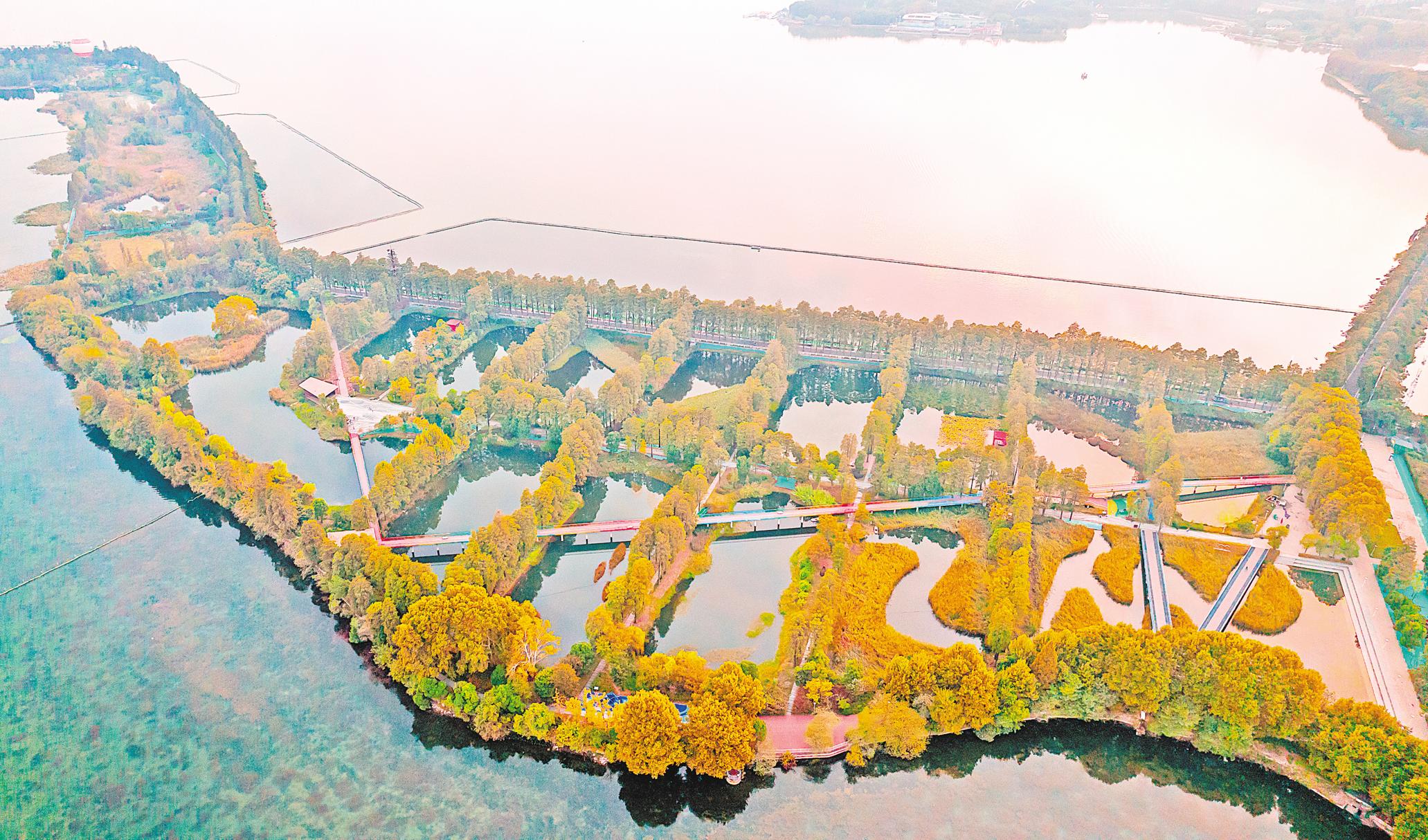
Wuhan National Government Site.
4. Guided Tours
For a more enriching experience, consider participating in a guided tour. Knowledgeable guides provide deeper insights into the significance of the site and its historical context. They can share anecdotes and lesser-known stories that enhance your understanding of this crucial period in Chinese history.
5. Nearby Attractions
After exploring the National Government Site, take advantage of its prime location by visiting other nearby attractions. Some must-see sites within a short distance include:
- Yellow Crane Tower: A historic tower offering stunning views of the Yangtze River and rich folklore.
- Wuhan Yangtze River Bridge: An architectural feat that links the city’s past with its present.
- Wuhan University: Renowned for its beautiful campus, particularly during cherry blossom season.
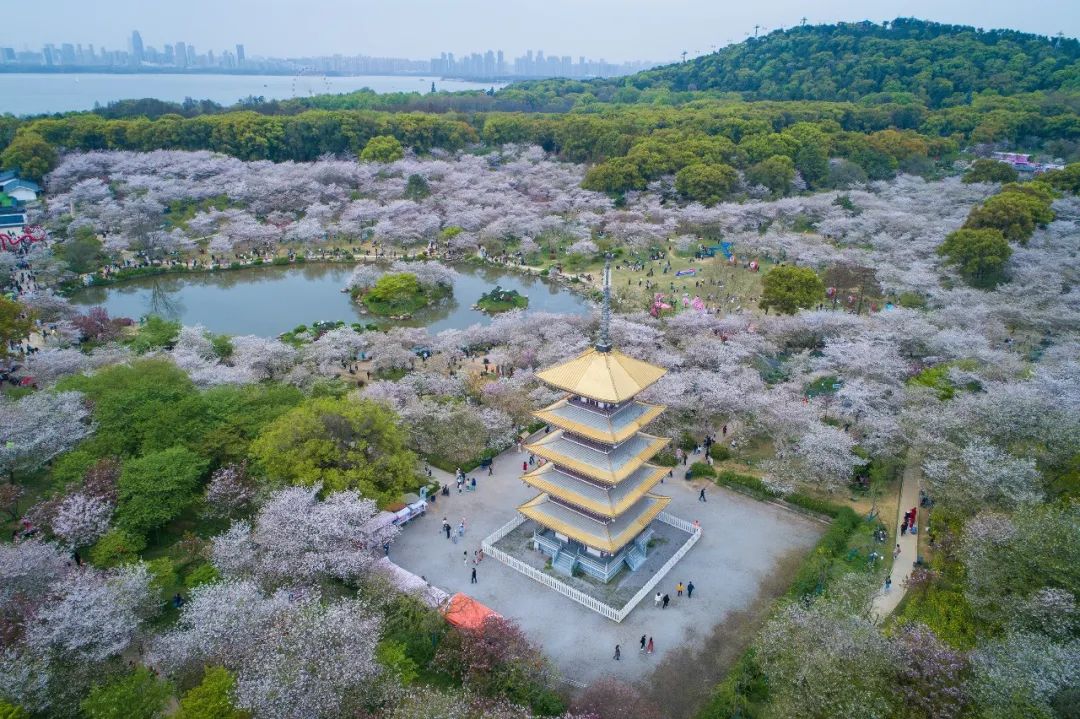
Wuhan National Government Site.
6. Dining Options
Complete your visit with a meal at one of the local restaurants nearby. From traditional Hubei cuisine to international fare, the culinary options are diverse and delicious. Try some local specialties to truly immerse yourself in Wuhan’s vibrant culture.
7. Visitor Information
- Location: No. 706 Zhongshan Avenue, Jianghan District, Wuhan 430014, China
- Hours: Open 24/7, making it convenient for all schedules.
- Tickets: Admission is generally free, but some special exhibitions may require a fee.
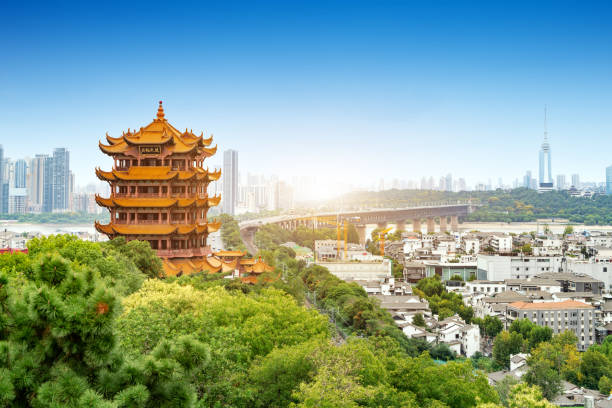
Wuhan National Government Site.
Conclusion
The Wuhan National Government Site is more than just a historical landmark; it is a portal into the struggles and triumphs of a nation at a crossroads. Whether you’re a history buff or a casual traveler, this site offers a profound and enriching experience that contributes to a deeper understanding of China’s past and its path forward. Embrace the opportunity to learn, reflect, and connect with history in this remarkable city.
Planning Your Visit: A Practical Guide
Essential Information for Your Visit to the Wuhan National Government Site
The Wuhan National Government Site (武汉国民政府旧址) offers an insightful glimpse into a pivotal period in Chinese history. To ensure your visit is both enjoyable and enriching, here’s a comprehensive guide covering everything you need to know.

Wuhan National Government Site.
Location and Access
- Address: No. 706 Zhongshan Avenue, Jianghan District, Wuhan, 430014, China.
- Getting There: The site is conveniently located in the bustling Jianghan District. You can reach it via local public transport, including buses and taxis. The closest metro station is a short walk away.
Opening Hours
- Hours of Operation: The site is open 24 hours a day, allowing you the flexibility to visit at your convenience. However, it’s advisable to go during daylight hours to fully appreciate the exhibitions.
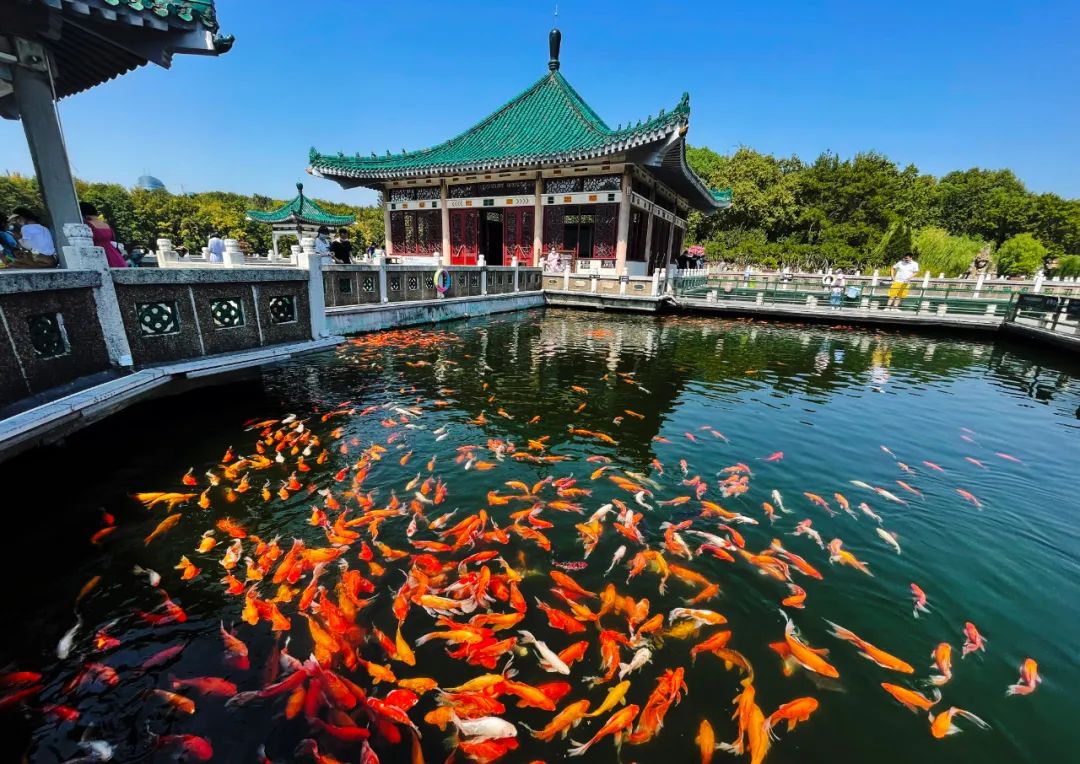
Wuhan National Government Site.
What to Expect
- Exhibits: The Wuhan National Government Site features a variety of exhibits that reflect the historical significance of the Nationalist government in the early 20th century. Expect to see photographs, artifacts, and detailed displays that contextualize this transformative era in Chinese history.
- Atmosphere: The site is not only a historical landmark but also a serene space where you can reflect on the past. Be prepared to immerse yourself in the rich narratives and stories that shaped modern China.
Recommended Experiences Nearby
If you’re planning to explore more of Wuhan, consider these nearby attractions:
– Yellow Crane Tower (2.4 miles away): An iconic symbol of Wuhan with stunning views of the Yangtze River.
– Wuhan Yangtze River Bridge (2 miles away): A historic bridge that is a marvel of engineering.
– Guiyuan Temple (2.7 miles away): A beautiful Buddhist temple known for its intricate architecture.
– Hubu Alley (2.2 miles away): A popular street food destination where you can sample local delicacies.

Wuhan National Government Site.
Dining Options
After exploring the site, indulge in some local cuisine. Here are a few recommended restaurants within close proximity:
– Amber Palace Indian Restaurant: Renowned for its diverse menu and vegetarian options (0.8 miles away).
– WuHan Dong Lai Shun QingZhen Restaurant: Offers delicious Halal barbecue (328 ft away).
– Yan LaoYao ShaoMai: A local favorite for traditional snacks (0.3 miles away).
Tips for Your Visit
- Plan Ahead: While the site is open all day, visiting during the early morning or late afternoon can help you avoid crowds.
- Bring a Camera: The site offers numerous photo opportunities, particularly for those interested in architecture and historical landmarks.
- Wear Comfortable Shoes: Expect to do a fair amount of walking both inside the site and in the surrounding area.
Cultural Considerations
Understanding the historical context of the Nationalist government will enrich your visit. Consider reading up on the period before your trip to appreciate the significance of the exhibits fully.
Stay Connected
For more information before your visit, check local tourism websites or travel forums for up-to-date details on events, tours, and visitor experiences.
By following this guide, you’ll be well-prepared to explore the Wuhan National Government Site and gain a deeper understanding of China’s historical journey. Enjoy your visit!
Tickets: Prices, Booking, and Tips
Explore the National Government Site: Ticket Information, Booking, and Travel Tips
Visiting the Wuhan National Government Site is a journey through an essential chapter of Chinese history. This landmark offers a unique opportunity to delve into the era of the Nationalist government and its pivotal role in shaping modern China. Here’s everything you need to know about ticketing, booking, and making the most of your visit.
Ticket Prices
- General Admission: Entry to the site is typically free, allowing visitors to explore the grounds and the historical architecture at no cost.
- Special Exhibitions: Occasionally, there may be temporary exhibitions or guided tours that require a fee. Prices for such events may range from CNY 30 to CNY 100 (approximately $5 to $15 USD). It’s advisable to check the official site or local tourism boards for current exhibitions and associated costs.
Booking Information
- Walk-Ins Welcome: The National Government Site operates on a walk-in basis, meaning you can visit anytime during opening hours without prior reservations.
- Guided Tours: If you prefer a more structured experience, consider booking a guided tour. Various local travel agencies offer private or group tours that cover key historical insights and additional sites in the area. Prices for these tours can range from CNY 199 to CNY 629 (around $30 to $100 USD), depending on the duration and inclusions.
Opening Hours
- The site is open 24 hours, allowing you to visit at your convenience. However, it is recommended to visit during daylight hours for the best experience and photography opportunities.
Tips for Your Visit
- Plan Ahead: While entry is free, it’s beneficial to check for any special exhibitions or events that may require tickets or advance booking.
- Bring a Camera: The architecture and surrounding landscape provide excellent photo opportunities, especially in the early morning or late afternoon light.
- Stay Hydrated: If you’re visiting during the warmer months, ensure you carry water, as you may spend a fair amount of time exploring the grounds.
- Local Attractions: Combine your visit to the National Government Site with nearby attractions such as the Yellow Crane Tower and the Wuhan Yangtze River Bridge to maximize your cultural experience.
- Public Transport: The site is easily accessible by public transport. Consider using the metro or local buses for convenience.
This historic landmark is not just a site to visit; it’s a deep dive into the history of modern China. Enjoy your journey back in time at the Wuhan National Government Site!
How to Get There: A Complete Transportation Guide
Navigating Your Way to the Wuhan National Government Site
Visiting the Wuhan National Government Site (武汉国民政府旧址) offers a glimpse into the rich tapestry of Chinese history, particularly during the tumultuous years of the Republic of China. To make the most of your visit, understanding the transportation options available is crucial. Below is a detailed guide to help you reach this historic site seamlessly.
Getting to Wuhan
By Air:
Wuhan Tianhe International Airport (WUH) serves as the primary gateway for international travelers. The airport is well-connected to major cities in China as well as select international destinations. Upon arrival, you have several options to reach the city center:
- Taxi: Easily accessible from the airport, taxis can take you directly to your hotel or to the National Government Site (approximately 30-40 minutes).
- Airport Shuttle: Several shuttle bus services run from the airport to various key locations in Wuhan. Look for the service that heads towards the city center.
By Train:
Wuhan is a major railway hub, making it convenient to arrive via high-speed train. The two main train stations are:
- Wuhan Railway Station: Located to the northwest of the city center, this station connects with major cities like Beijing, Shanghai, and Guangzhou.
- Wuhan High-Speed Railway Station: Situated on the outskirts, this station also serves high-speed trains and offers a modern experience.
From either station, you can take a taxi or use public transportation to reach the National Government Site.
Public Transportation in Wuhan
Subway:
Wuhan boasts an extensive subway system that is both efficient and affordable. The National Government Site is easily accessible via:
- Line 1: Get off at the Jianghan Road Station. From there, it’s a short walk (about 15 minutes) to the site.
- Line 2: You can also take this line and transfer to Line 1 at Wuhan Railway Station.
Buses:
Wuhan’s bus network is comprehensive. Buses 511 and 715 stop near the National Government Site, providing an economical option for travelers. Check local schedules for exact routes and timings.
Taxis and Ride-Sharing
Taxis are readily available throughout the city. Make sure to have your destination written in Chinese to show the driver. Ride-sharing apps like Didi Chuxing are also popular and can be a convenient alternative for international visitors unfamiliar with the language.
Walking and Biking
If you’re staying in the vicinity, walking or renting a bike can be pleasant ways to explore the area around the National Government Site. The site is located on Zhongshan Avenue, where you can find cafes and shops that reflect the local culture.
Final Tips
- Language: While many signs are in English, it’s advisable to download a translation app to help with communication.
- Timing: The site is open 24 hours, but visiting during daylight can enhance your experience, allowing you to explore the surrounding area and nearby attractions.
- Nearby Attractions: After your visit, consider exploring other historical sites such as the Yellow Crane Tower and the Wuhan Yangtze River Bridge, both of which are accessible via public transport.
With this guide, you’re well-equipped to navigate your way to the Wuhan National Government Site. Embrace the history, immerse yourself in the culture, and enjoy your journey through this fascinating chapter of China’s past!
Local Cuisine and Accommodation Nearby
Discovering Local Flavors and Comfortable Stays Near the Wuhan National Government Site
As you delve into the rich history at the Wuhan National Government Site (武汉国民政府旧址), your culinary journey and accommodation choices can elevate your experience. This vibrant area offers a delightful range of local cuisine and comfortable lodging options, ensuring your visit is both enjoyable and memorable.
Culinary Delights
- WuHan Dong Lai Shun QingZhen Restaurant (伍汉东来顺清真餐厅)
- Cuisine: Barbecue, Halal
- Distance: Approximately 328 ft
-
Highlights: Known for its flavorful grilled dishes, this restaurant offers a halal menu, making it a great choice for those seeking authentic barbecue in a welcoming atmosphere.
-
Amber Palace Indian Restaurant
- Cuisine: Indian, Barbecue, Vegan Options
- Distance: 0.8 mi
-
Highlights: For a taste of Indian cuisine, Amber Palace stands out with its extensive menu that includes vegan options. The warm ambiance and attentive service add to the dining experience.
-
XiaoZhang KaoYu (小张烤鱼)
- Cuisine: Seafood, Barbecue
- Distance: 0.2 mi
-
Highlights: A local favorite for grilled fish, XiaoZhang KaoYu offers a unique spin on traditional barbecue, featuring a variety of fish cooked to perfection.
-
Yan LaoYao ShaoMai (严老姚烧麦)
- Cuisine: Local Snacks
- Distance: 0.3 mi
-
Highlights: Don’t miss the chance to sample authentic Wuhan-style ShaoMai, a traditional steamed dumpling filled with savory ingredients, perfect for a quick bite.
-
Hubu Alley (户部巷)
- Cuisine: Various street food options
- Distance: 2.2 mi
- Highlights: While slightly farther away, Hubu Alley is a gastronomic haven, bursting with local street food stalls. From hot dry noodles to spicy duck neck, this bustling alley is a must-visit for food lovers.
Comfortable Accommodations
- Wuhan Jin Jiang International Hotel
- Star Rating: 5-Star
- Distance: 1.2 mi
-
Highlights: Nestled in the heart of Wuhan, this luxurious hotel offers modern amenities, exquisite dining options, and easy access to major attractions, including the National Government Site.
-
Novotel Wuhan Xunlimen
- Star Rating: 4-Star
- Distance: 1.0 mi
-
Highlights: A perfect blend of comfort and convenience, this hotel features spacious rooms and a fitness center, making it ideal for both leisure and business travelers.
-
Hanting Hotel Wuhan Jianghan Road
- Star Rating: Budget
- Distance: 0.5 mi
-
Highlights: For travelers on a budget, this hotel provides clean and comfortable accommodations, just a short walk from the National Government Site and various dining options.
-
Wuhan Yangtze River Hotel
- Star Rating: 3-Star
- Distance: 1.5 mi
-
Highlights: With stunning views of the Yangtze River, this mid-range hotel offers a cozy atmosphere and easy access to both the waterfront and historical sites.
-
Han Yue Lou Hotel
- Star Rating: 4-Star
- Distance: 1.8 mi
- Highlights: With its elegant design and excellent service, this hotel is ideal for those looking to enjoy a blend of local culture and modern comfort.
Conclusion
As you explore the historical significance of the Wuhan National Government Site, take the time to savor the local flavors and enjoy a restful stay. The rich culinary landscape and varied accommodation options in Wuhan make this city a delightful destination for history enthusiasts and food lovers alike.
Frequently Asked Questions
Frequently Asked Questions
1. What is the Wuhan National Government Site?
The Wuhan National Government Site (武汉国民政府旧址) is a historical landmark that served as the headquarters of the National Government of the Republic of China during the 1920s and 1930s. It is an important site for understanding China’s modern history and offers visitors insights into the political climate of the time.
2. What are the opening hours?
The site is open 24 hours a day, seven days a week, allowing visitors to explore this significant historical location at their convenience.
3. Is there an admission fee?
Entry to the Wuhan National Government Site is free of charge, making it an accessible destination for all travelers interested in Chinese history.
4. What can I expect to see during my visit?
Visitors can explore various exhibits showcasing historical photographs, artifacts, and displays that reflect the political environment of the National Government era. The architecture of the building itself is also a highlight, representing the unique styles of that period.
5. How do I get to the site?
The Wuhan National Government Site is located at No. 706 Zhongshan Avenue, Jianghan District. It is easily accessible by public transport, including buses and taxis. If you’re staying in central Wuhan, many landmarks and attractions are within walking distance.
6. Are there any guided tours available?
While the site can be explored independently, there are numerous private guided tours available that include the National Government Site along with other historical landmarks in Wuhan. These tours can provide deeper insights into the history and significance of the site.
7. Are there any nearby attractions worth visiting?
Yes! The area surrounding the Wuhan National Government Site is rich in history and culture. Nearby attractions include the Yellow Crane Tower, the Wuhan Yangtze River Bridge, and the bustling Walking Street of Jianghan Road. These sites can easily be incorporated into your travel itinerary.
8. Is photography allowed?
Photography is generally permitted at the Wuhan National Government Site, allowing visitors to capture the essence of this historic location. However, it’s always good practice to check for any specific rules related to photography in exhibition areas.
Final Thoughts on Your Trip
As your journey through the rich tapestry of Wuhan’s history comes to a close, the Wuhan National Government Site stands as a poignant reminder of a transformative era in Chinese history. This site, imbued with stories of resilience and ambition, invites you to reflect on the complexities of the past while marveling at the architectural elegance that has withstood the test of time.
A Journey of Discovery
Visiting the National Government Site is not merely an exploration of bricks and mortar; it is an opportunity to connect with the narratives that shaped modern China. The exhibits within this historic building offer a glimpse into the lives of those who walked its halls—leaders, visionaries, and everyday citizens—all of whom contributed to the fabric of the Republic.
Recommendations for a Complete Experience
To enrich your visit, consider exploring nearby attractions that complement your understanding of Wuhan’s historical significance. Here are a few suggestions:
- Yellow Crane Tower: An iconic symbol of Wuhan, offering breathtaking views and rich legends.
- Hubei Provincial Museum: A treasure trove of artifacts that narrate the region’s storied past.
- Walking Street of Jianghan Road: Experience the vibrant local culture while enjoying shopping and dining options.
Final Reflections
As you leave the National Government Site, carry with you the lessons of history and the spirit of a city that has embraced change while honoring its roots. Whether you are captivated by its architectural beauty or the stories it tells, this site is a gateway to understanding the resilience and aspirations of the Chinese people.
In closing, let your experience in Wuhan inspire you to delve deeper into the narratives of cultures worldwide. Each visit not only enriches your own life but also contributes to the preservation of shared histories that unite us all. Safe travels, and may your adventures continue to be filled with discovery and understanding!